Top 10 Myths and Facts About AMD Graphics Cards (2025)
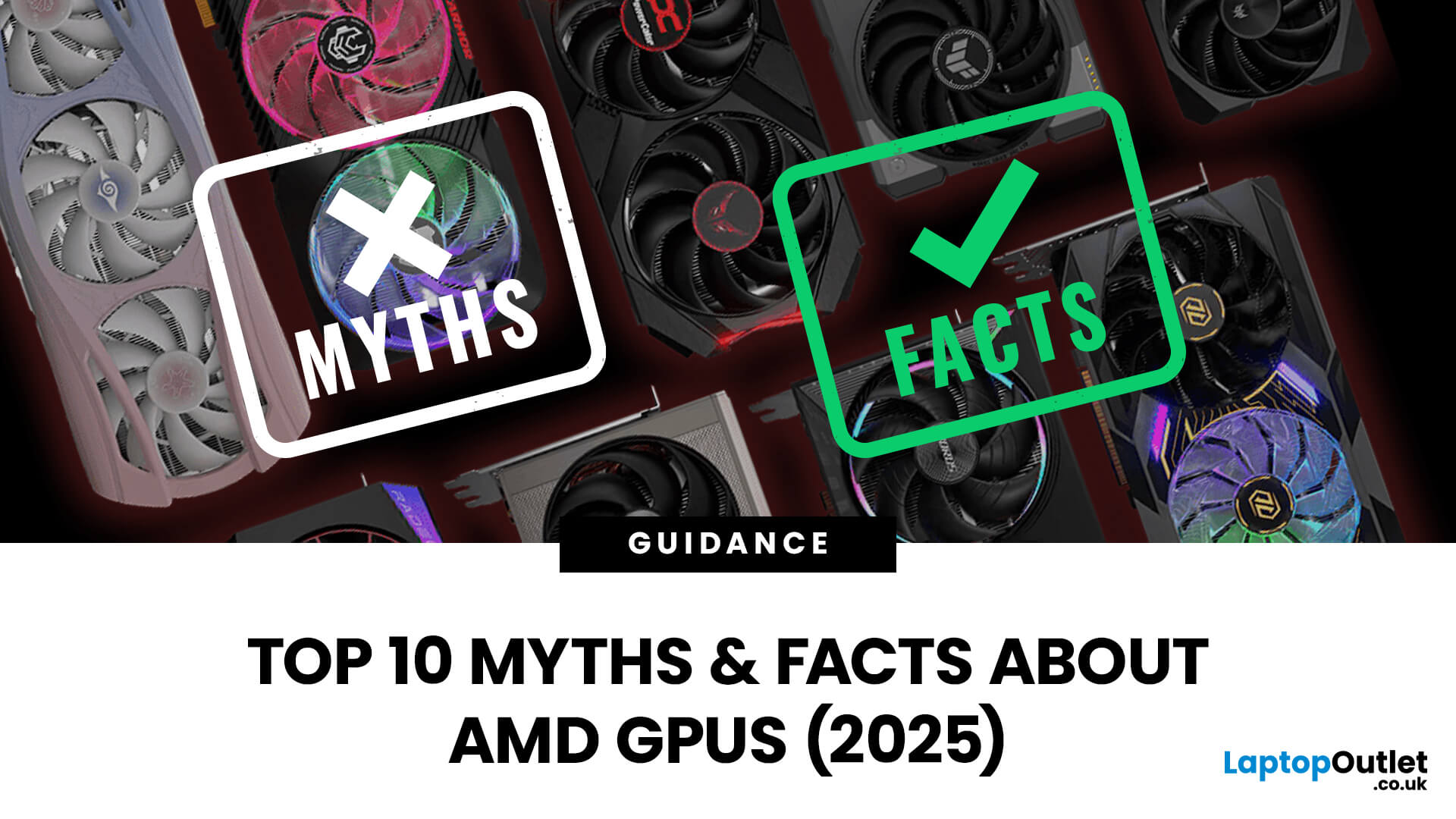
You’ve probably heard that AMD GPUs crash too much, they’re only for budget builds, or they can’t compete with NVIDIA. High-key, Most of that’s nonsense.
It’s time to get to the heart of the matter and set the record straight on AMD Radeon graphics cards in 2025.
Let’s bust today the biggest myths and spotlight a few surprising truths about Radeon GPUs.
Myth #1: AMD GPUs Overheat Easily
Truth: Modern AMD GPUs run cool and efficiently.
Behind the scenes: With RDNA 2 and RDNA 3 architecture, AMD significantly improved thermal performance. GPUs like the RX 7600 and 7700 XT maintain stable temps even under heavy load. Most issues arise from poor airflow or outdated perceptions based on older generations, like Vega or early Polaris.
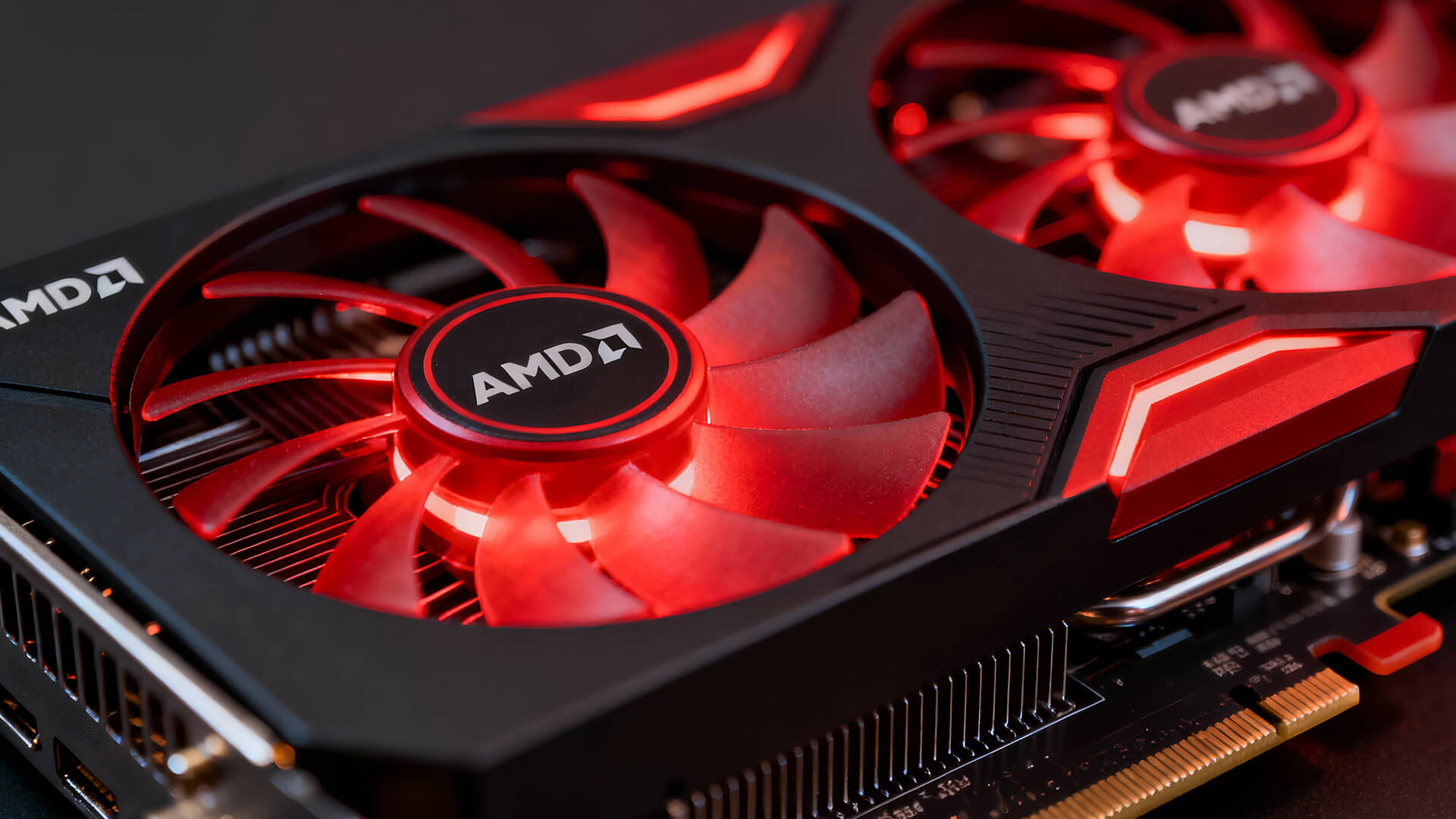
Myth #2: AMD Drivers Are Unstable
Truth: Radeon drivers have matured and are now highly stable.
Behind the scenes: AMD’s Adrenalin Software Suite is regularly updated and now includes advanced features like Radeon Chill, Anti-Lag, and Boost. The “unstable driver” stigma dates back to older cards (pre-2020), but current driver stability is on par with competitors.
Myth #3: AMD Cards Are Bad for Ray Tracing
Truth: AMD GPUs support real-time ray tracing and FSR upscaling.
Behind the scenes: Starting with RX 6000 series, AMD added full ray tracing support. While NVIDIA may have an edge in raw RT performance, AMD balances it with features like FSR 3, which boosts frame rates and image quality, especially at 1440p and 4K. To dive deeper into how ray tracing and AI upscaling affect GPU performance, check out our article on How DLSS 3.5 & Ray Tracing Impact High-End GPU Performance.
Myth #4: AMD GPUs Aren’t Good for Content Creation
Truth: Radeon GPUs perform well in video editing, streaming, and 3D workflows.
Behind the scenes: Many creative apps, DaVinci Resolve, Adobe Premiere, Blender, are optimized for AMD. And thanks to large VRAM in mid- and high-end cards (e.g., 12GB+), Radeon cards handle high-resolution video and 3D renders efficiently.
For a detailed look at GPUs that excel in content creation workflows, see Top GPUs for 3D Rendering, Video Editing & Game Streaming.
Myth #5: NVIDIA Cards Always Outperform AMD
Truth: It depends on the price and use case.
Behind the scenes: In the £250– £600 range, AMD often delivers better value, with more VRAM and competitive FPS in modern titles. The RX 7800 XT, for example, outperforms similarly priced NVIDIA cards in many 1440p benchmarks.
For those interested in high-end options, check out our roundups of the Best High-End Graphics Cards For Hardcore Gamers & Creators and the Best High-End GPUs for 4K & Ray Tracing Gaming.
Myth #6: AMD GPUs Aren’t Future-Proof
Truth: AMD GPUs offer modern features, long driver support, and great longevity.
Behind the scenes: Technologies like FSR, Smart Access Memory, and PCIe 4.0/5.0 compatibility make AMD GPUs highly relevant for years. AMD also supports older cards with driver updates longer than many expect.
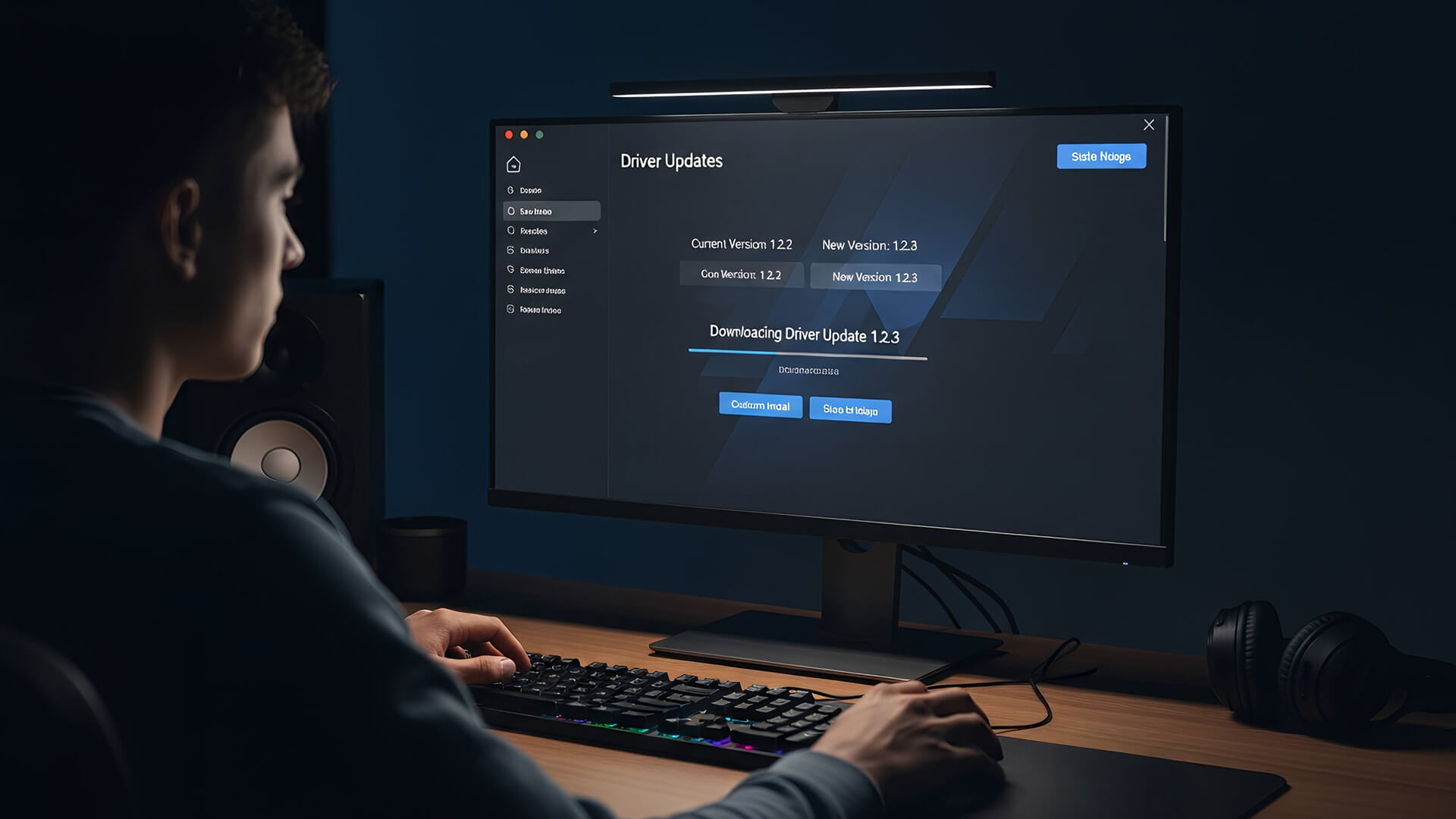
Myth #7: You Need an AMD CPU to Use an AMD GPU
Truth: Radeon GPUs work with any modern CPU - Intel or AMD.
Behind the scenes: You can pair AMD GPUs with Intel CPUs without any issue. However, using an AMD CPU unlocks features like Smart Access Memory for a slight performance boost, not a requirement, but a bonus.
Myth #8: AMD Cards Don’t Support DLSS
Truth: True - but they have their own solution: FSR.
Behind the scenes: DLSS is NVIDIA-exclusive, but AMD’s FidelityFX Super Resolution (FSR) is platform-agnostic. FSR 3 supports frame generation and upscaling across multiple GPU brands, making it widely available and increasingly competitive with DLSS.
Bonus: A Few Surprising Facts About AMD GPUs
You might think you know AMD inside and out, but these facts might just surprise you. From powering next-gen consoles to offering more VRAM for your money, AMD is full of hidden advantages worth knowing.
Fact 1: Most Consoles Use AMD GPUs
No Cap: Both PlayStation 5 and Xbox Series X/S are powered by custom AMD RDNA GPUs. That means many modern games are optimized for AMD hardware from the ground up, which benefits PC gamers too.
Fact 2: AMD Offers More VRAM Than NVIDIA at Similar Prices
No Cap: Many Radeons GPUs include more VRAM than their NVIDIA counterparts. For example, the RX 7700 XT has 12GB VRAM, while NVIDIA’s RTX 4060 Ti (8GB) struggles in some modern games due to memory limitations.
For a direct comparison of flagship cards, see our detailed AMD Radeon RX 7900 XTX vs NVIDIA RTX 4090 – Flagship Battle.
Fact 3: AMD FSR Works on NVIDIA Cards Too
No Cap: FidelityFX Super Resolution is open-source and not limited to AMD GPUs. Even gamers using NVIDIA cards can benefit from FSR performance boosts in supported titles, showing AMD’s broader commitment to accessible performance scaling.

Final Takeaway
AMD graphics cards have evolved far beyond the old myths. Whether you're building a budget-friendly rig or a 4K gaming beast, Radeon GPUs offer real performance, features, and value that rival and sometimes beat the competition.
Related Articles

August 03, 2023
Are you looking for a gaming laptop with the best workstation CPU? Fortunately, you’re in the right place. Here we have some of the cutting-edge AMD Ryzen 7 laptops for you.
Just like a desktop PC, the brain of a laptop is its central processing unit (CPU), also known as a chip or processor, which is responsible for not only gaming but almost everything else going on inside. The processors you'll find in the latest gaming laptops are made by AMD, Intel, Apple, and Qualcomm. Among these biggest names, AMD took the crown in performance for a while since they launched their latest Ryzen 7 series of CPUs. These processors, being called "undeniable kings of gaming", are affordable, power-efficient, and excellent in eSports and video creation as compared to their counterparts.
However, finding and choosing a brand offering high quality laptops powered by AMD's latest Ryzen 7 processors can be quite overwhelming sometimes. ASUS has been standing out as the "global technology leader," particularly
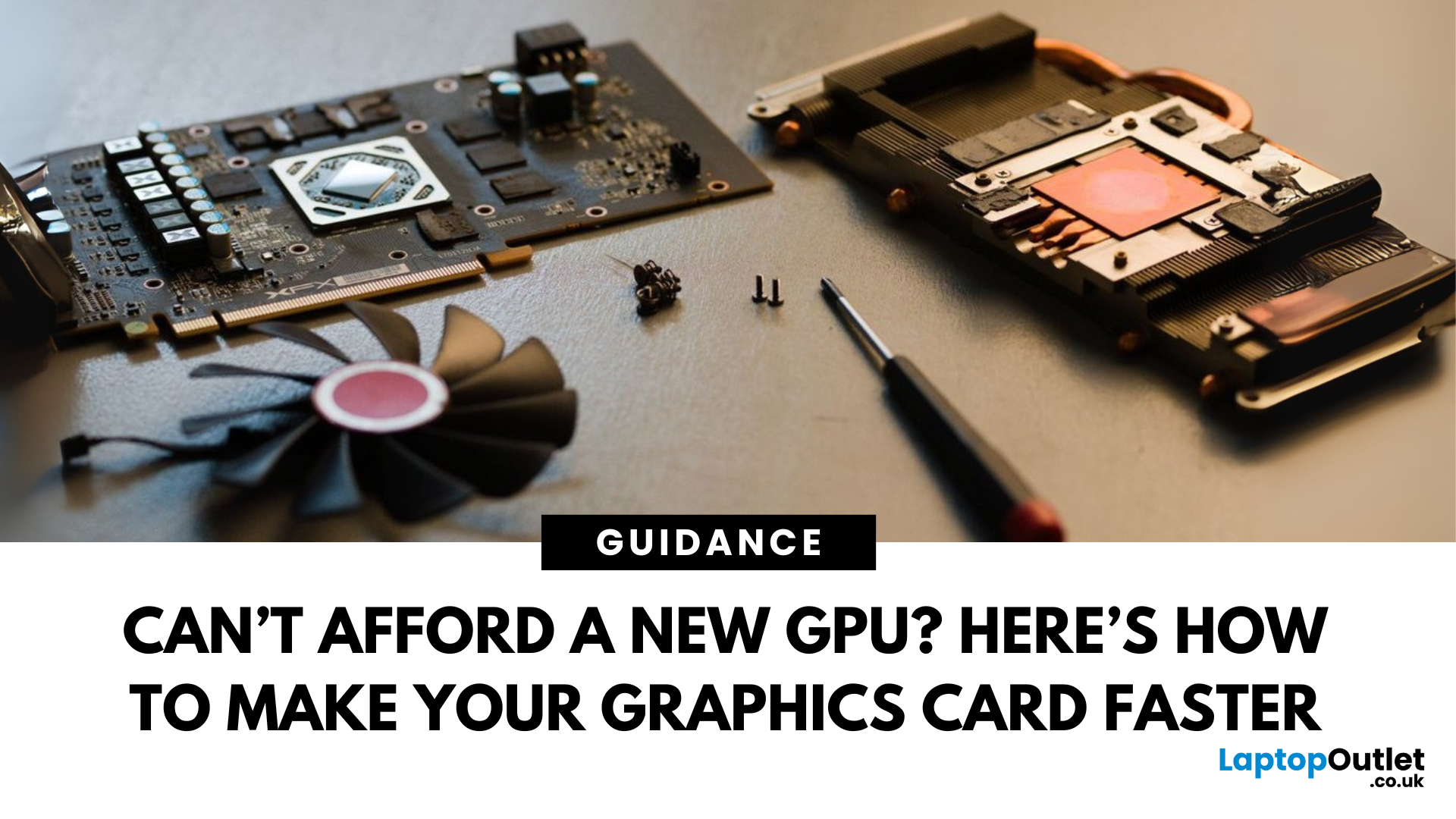
July 02, 2025
Let’s face it. Graphics cards are expensive. And while everyone wants that shiny new GPU to max out game settings or improve their creative workloads, it’s not always realistic. Between supply issues, steep prices and rapid technology cycles, buying a new graphics card can often feel like a luxury rather than a necessity.
The good news is that you don’t need to replace your GPU to breathe new life into your gaming rig or workstation. With a little time, care, and smart system tweaks, you can get more performance out of your current card and make it run quieter, cooler and faster.
In this guide, we’ll walk you through practical ways to improve your GPU’s performance, longevity, and efficiency without splashing out on brand-new hardware. If you’re looking to upgrade graphics card performance without replacing it entirely, you’re in the right place.
Tips to Make your Graphics Card Faster Without Upgrading It
-
Clean and Maintain Your GPU for a Performance Boost
Before we even touch the software
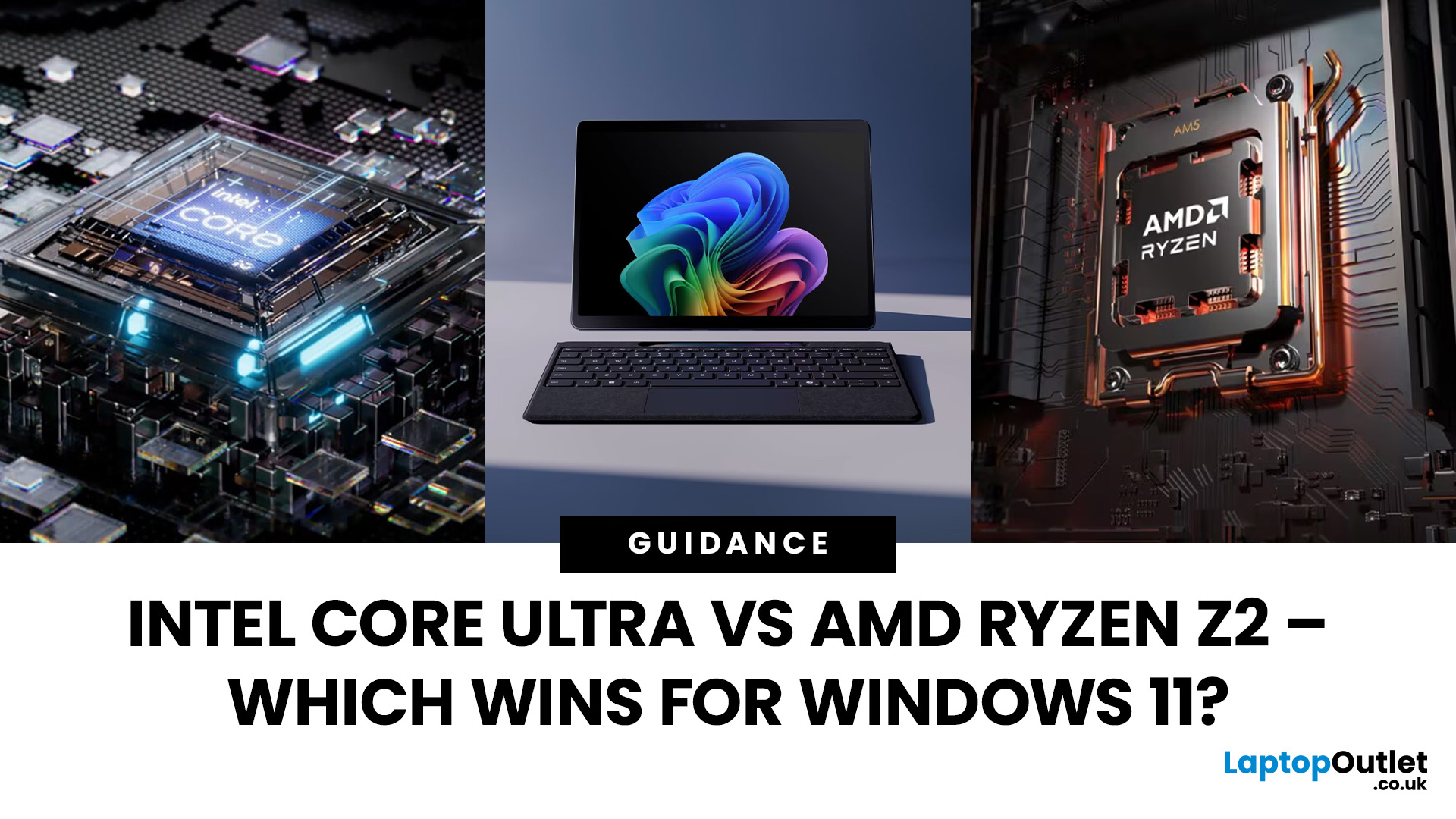
October 08, 2025
The battle between Intel and AMD has shaped the laptop world for decades. With the release of Intel Core Ultra processors and the new AMD Ryzen Z2 series, that rivalry has entered a new phase - one defined not just by raw speed, but also by AI integration, efficiency, and Windows 11 optimisation.
Intel’s Core Ultra chips (available in Core Ultra 5, 7, and 9 tiers) mark a major shift in design, blending performance and efficiency cores with a dedicated AI NPU (Neural Processing Unit). Meanwhile, AMD’s Ryzen Z2 processors are raising eyebrows with their RDNA 3.5 graphics and strong balance between performance and battery efficiency.
So, which one is better for you? In this guide, we’ll break down the Intel vs AMD Windows 11 laptops debate, comparing performance, AI features, battery life, and creative workloads. Whether you’re a student, gamer, or professional, by the end you’ll know which processor suits your needs.
Intel Core Ultra – What’s New?
Intel’s Core Ultra range is its most significant
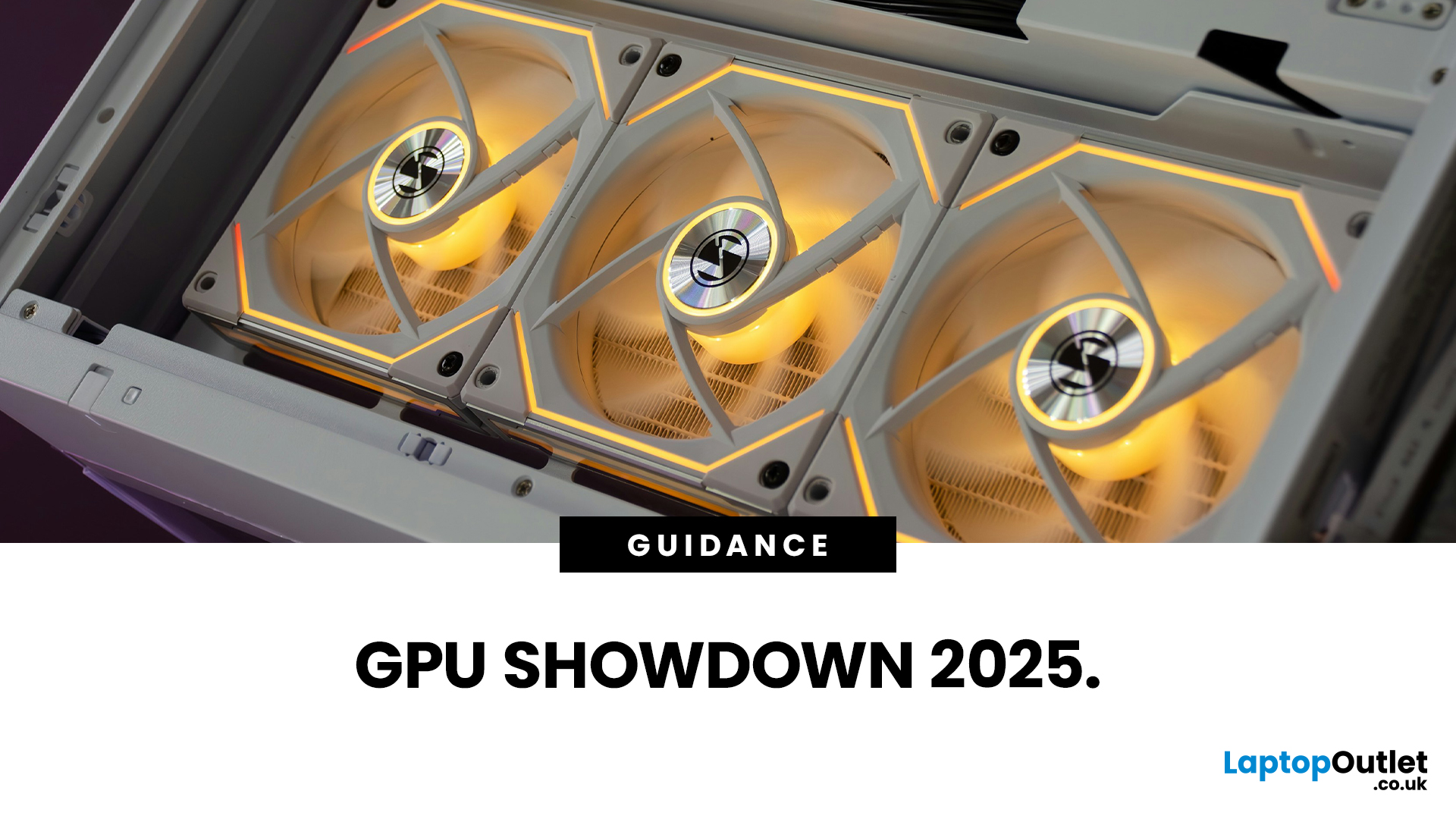
October 22, 2025
We’ve been deep in the trenches with today’s top-tier GPUs, testing them across real-world gaming sessions, editing timelines, and production rigs. This isn’t just another spec dump. It’s a curated breakdown of what actually matters when you're pushing pixels or chasing frames. Whether you're building for buttery 4K gameplay or need something that won’t choke on a multi-cam 8K edit, we’ve cut through the marketing noise to highlight what each card nails (and where it stumbles). No filler, no fluff, just the kind of insight we’d want before dropping serious cash on a new GPU.
ASUS GeForce RTX 5090 ROG Astral 32GB OC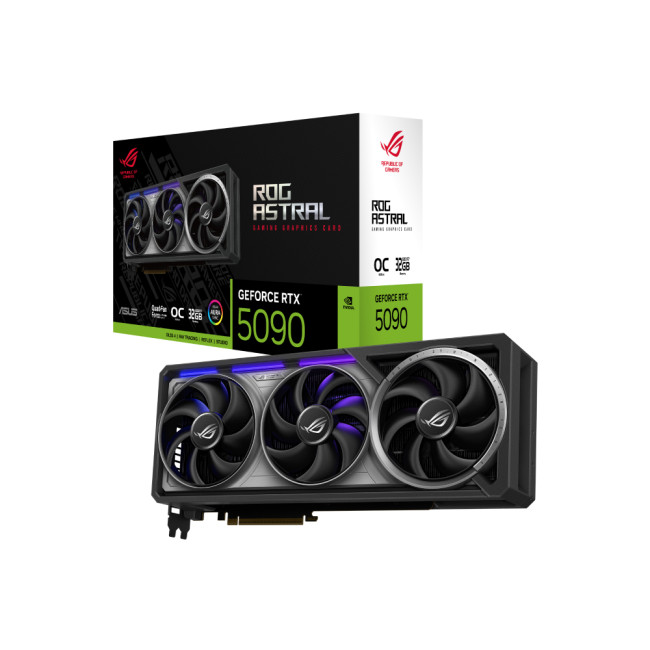
Also Known As:
- ROG STRIX RTX 5090
- NVIDIA GeForce RTX 5090 ROG Astral OC
- The Beast from the Future
Overview & Standout Features
The ASUS RTX 5090 ROG Astral isn’t just a GPU; it’s a flex. This monster packs 32GB of next-gen GDDR7 VRAM, triple axial-tech fans, and more RGB than your setup probably needs (but still wants). ASUS has taken NVIDIA’s flagship and strapped
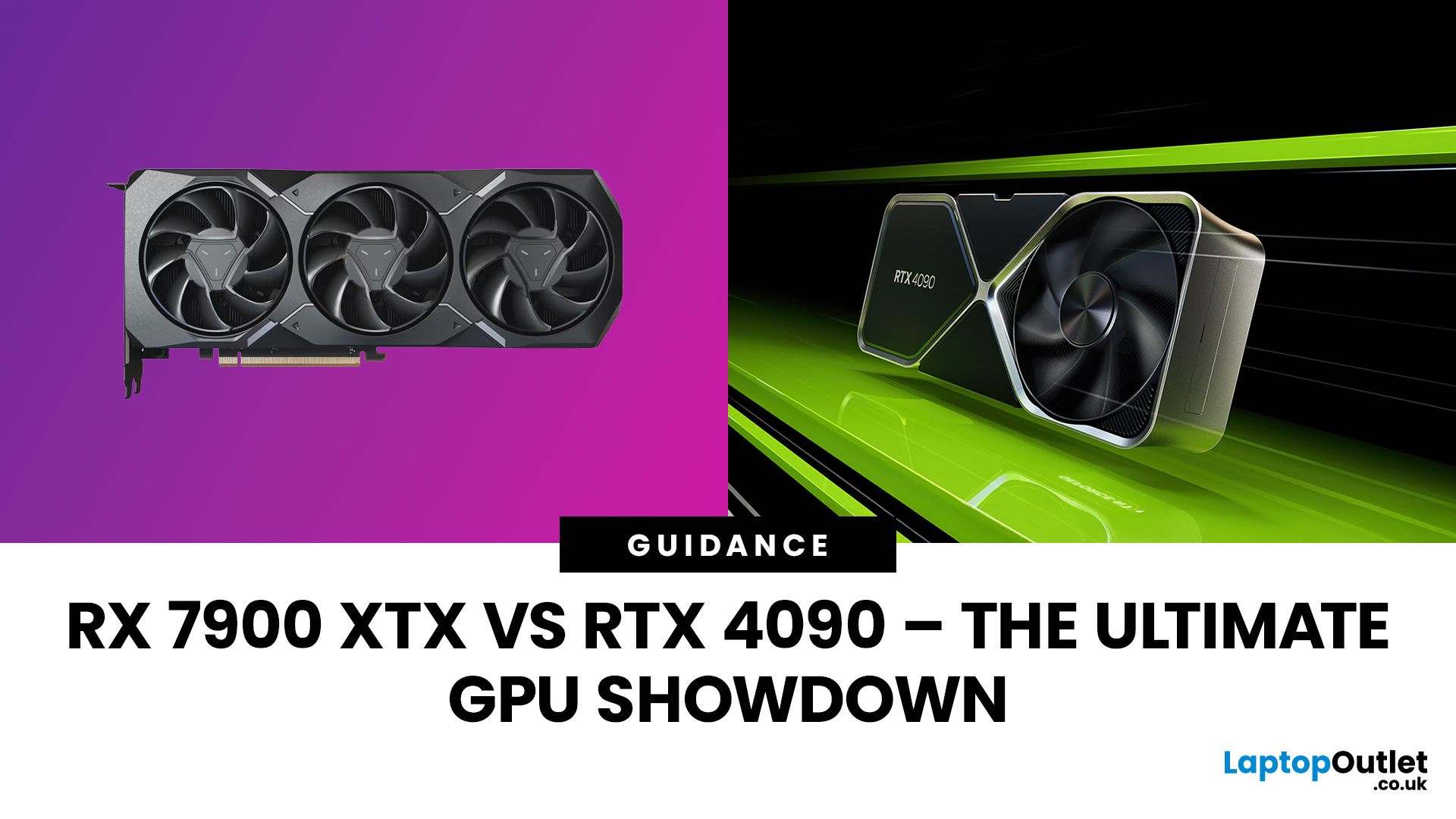
October 23, 2025
The AMD Radeon RX 7900 XTX and NVIDIA RTX 4090 are 2025’s top-tier GPUs, built for 4K gaming and professional workloads. The RTX 4090 leads in raw power, ray tracing, and AI acceleration, while the RX 7900 XTX challenges it with lower cost and strong raster performance. This isn’t about branding, it’s about what delivers the best performance per pound. In this breakdown, we’ll compare specs, gaming benchmarks, ray tracing, AI workloads, thermals, and overall value to determine which flagship GPU truly dominates.
Specification Overview
Before comparing real-world performance, it’s important to see how these two GPUs differ on paper. The RTX 4090 is built on NVIDIA’s Ada Lovelace architecture, while the RX 7900 XTX uses AMD’s RDNA 3 designs. Both target 4K gaming, but their hardware layouts, power needs, and pricing tell very different stories.
|
Specification |
AMD Radeon RX 7900 XTX |
NVIDIA GeForce RTX 4090 |
|
Architecture |
RDNA 3 |
Ada Lovelace |
|
GPU Process |
5 nm + 6 nm (chiplet) |
4 nm monolithic |

October 23, 2025
If you’ve ever felt overwhelmed stepping into the world of GPUs, you’re not alone. Choosing the right graphics card is one of the trickiest parts of building or upgrading a PC. In this guide, I’ll walk you through how to choose a graphics card, explain critical specs, compare AMD vs NVIDIA, help you pick thebest GPU for gaming, and highlight what to consider ifyou’re going for4K gaming.
This graphics card buying guideis your ultimate companion to navigate through the maze of options. We'll break down key specs, performance insights, comparisons, and practical tips to help you make an informed purchase, especially ifyou'reshopping at Laptop Outlet, one of the UK’s trusted tech retailers.
Understanding What a Graphics Card Does
A graphics card, or GPU (Graphics Processing Unit), is the powerhouse responsible for rendering images, videos, and animations on your screen. Think of it as the heart of your visual experience. It determine show smoothly your games run, how sharp your 4K videos
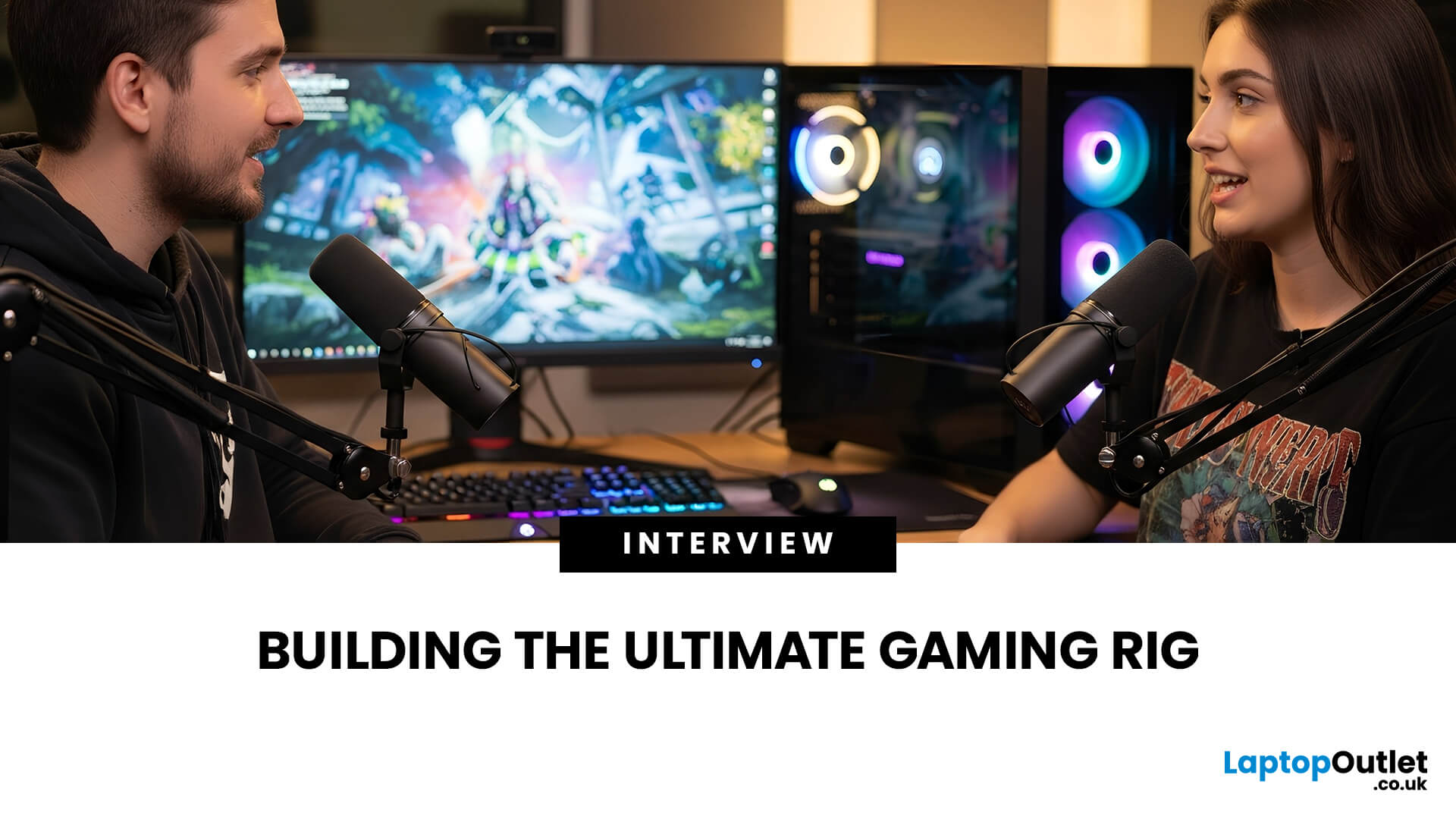
October 29, 2025
Setting the Scene
Alex: First of all, thanks for having this discussion, Jamie. I’m in the process of upgrading my rig, and I want to get the best GPU for gaming I can afford. But there are so many options out there, and I’m a bit lost, especially with the new 50-series from NVIDIA, and the still-very-solid 40-series.
Jamie: No problem, Alex, happy to help. Upgrading the graphics card is probably the biggest single component decision in a gaming rig (other than maybe the monitor or CPU). So, it’s good that we step through it together.
Why is the Graphics Card Matters
Alex: So, to start with: why is the graphics card so important for a gaming rig?
Jamie: In short, the GPU is what actually renders your game frames, handles complex calculations for lighting, shadows, textures, and especially if you’re gaming at higher resolutions (1440p, 4K) or using high refresh rates. If you pair everything else well (CPU, RAM, storage, PSU, cooling), the graphics card becomes a bottleneck if it’s too
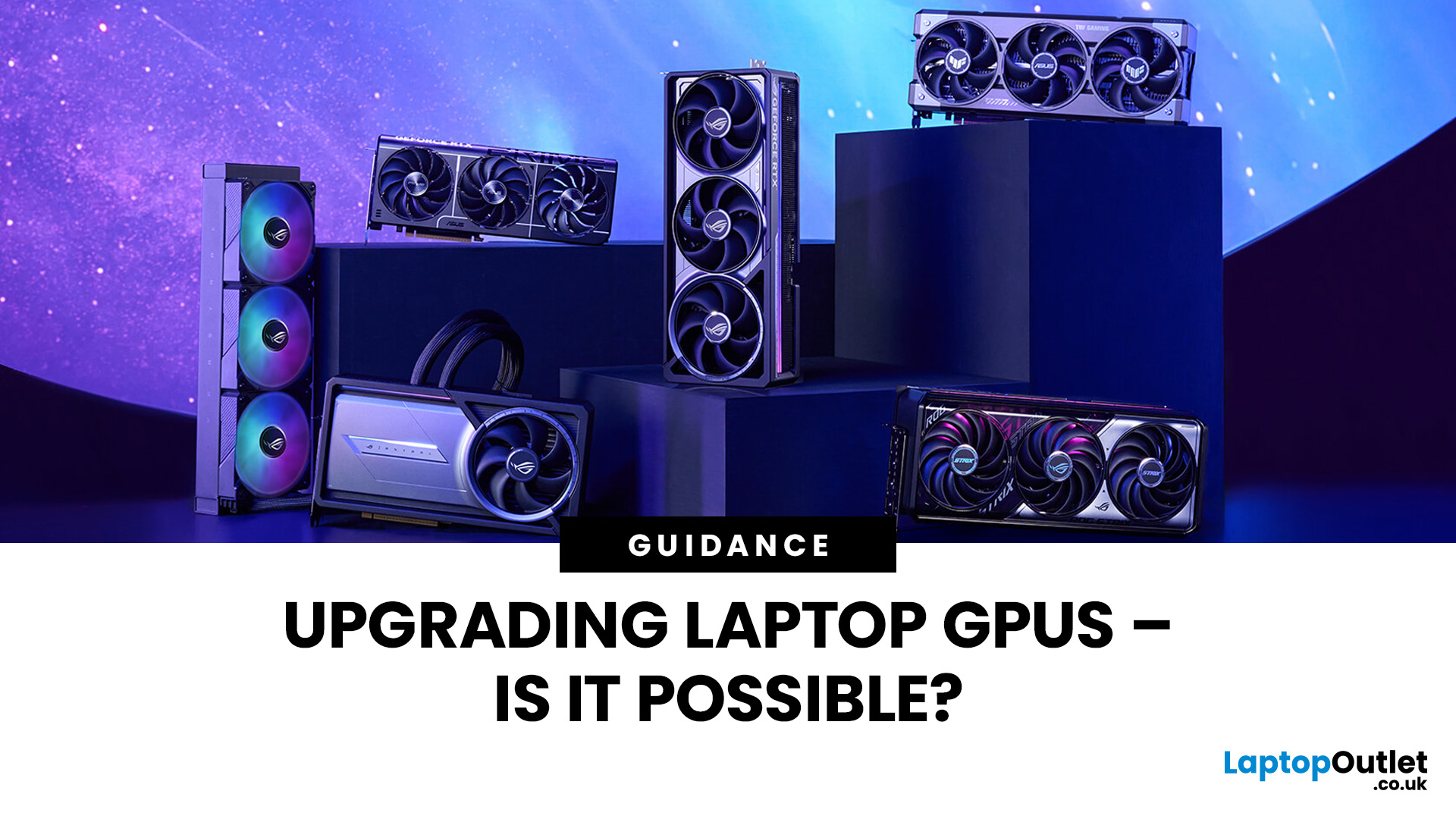
November 03, 2025
Let’s be honest: laptops are bloody brilliant. Sleek, portable, and increasingly powerful, what’s not to love? But then you try running a modern game on “Ultra” or crunching a 4K video edit and your laptop’s fan sounds like it’s preparing for takeoff. That’s when the thought creeps in: Can I replace the graphics card on my laptop? Well, grab a cuppa and settle in. We’re diving into the surprisingly sticky world of laptop GPU upgrades.
First Things First: What Exactly is a Laptop GPU?
A GPU (Graphics Processing Unit), often referred to as a graphics card, is what makes the pretty things on your screen look… well, pretty. Whether you're gaming, editing videos, running simulations, or just watching Netflix in glorious HD, it’s your GPU doing the heavy lifting.
Now, in desktop PCs, the graphics card is typically a large, separate component that you can easily yank out and replace. But in laptops, things get a little trickier.
Can You Replace a Laptop Graphics Card?
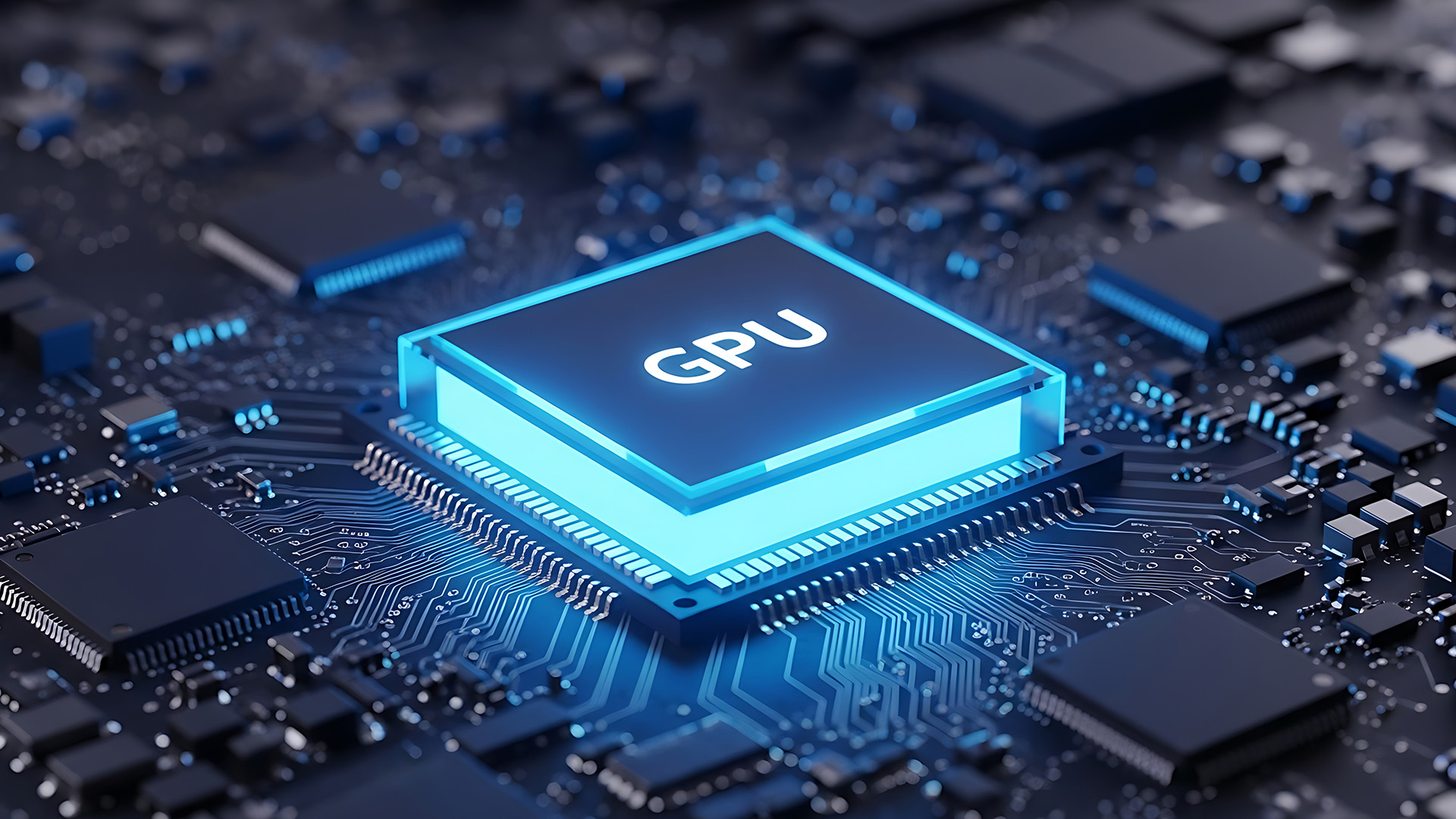
The Brutal Truth: In
